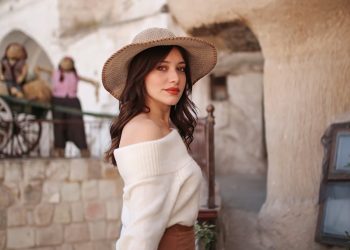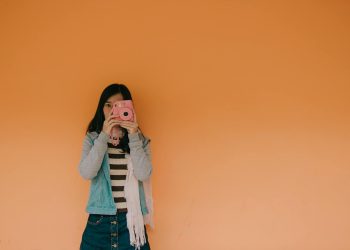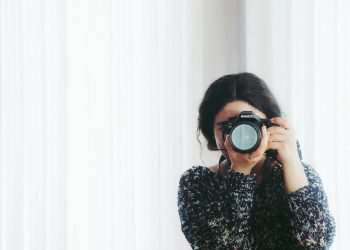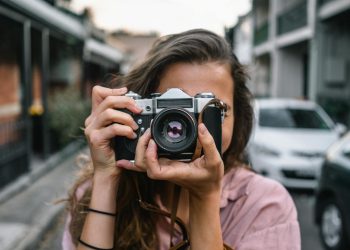Photography, at its core, is a deeply personal art. It’s not just about capturing what’s in front of the lens—it’s about showing the world how you see. In a sea of filters, presets, and Instagram trends, the photographers who stand out are those who develop a personal style. But how does one move beyond imitation and trends to create something uniquely their own? Building a personal photography style is not a destination—it’s a journey of self-discovery, experimentation, and storytelling.
Why Personal Style Matters
A personal style is more than a consistent color grade or subject matter—it’s a visual fingerprint. It’s the mood you evoke, the themes you explore, the rhythm in your compositions. Think of iconic photographers like Steve McCurry or Annie Leibovitz. Even without a caption, you can often tell their work apart. That’s the power of personal style. It helps you stand out, connect deeply with your audience, and gives your work authenticity.
But developing this style doesn’t happen overnight. It involves trial and error, learning the rules and then bending or breaking them, and—perhaps most importantly—learning about yourself.
Explore Before You Define
In the early stages, it’s natural to try on different hats. You may shoot street one week, macro the next, and landscapes after that. This exploration phase isn’t wasted time—it’s where you discover what resonates with you. By photographing a wide variety of subjects and techniques, you develop both technical versatility and emotional awareness.
During this phase, ask yourself: What subjects excite me most? What lighting conditions do I keep returning to? Am I drawn to symmetry, chaos, vibrant color, or subdued tones? Don’t rush to answer—just keep shooting, keep observing.
Inspiration vs. Imitation
There’s a fine line between being inspired and imitating. It’s healthy to admire and learn from other photographers, but mimicking them without injecting your perspective will eventually feel hollow. Use inspiration as a jumping-off point, not a destination.
Create mood boards of work that inspires you, but ask why it appeals. Is it the intimacy of the portrait? The melancholy in the color palette? The dynamic movement? Deconstructing others’ work helps you identify what aligns with your vision and what doesn’t.
The Role of Technical Choices
Your gear and editing choices can influence your style, but they shouldn’t dictate it. Shooting with a wide-angle lens, for example, might lend itself to environmental portraits or expansive landscapes, while a prime 85mm lens could encourage intimate portraiture. Similarly, your editing workflow—whether minimal and natural or dramatic and stylized—can reinforce your vision.
That said, don’t let the hunt for new gear distract you from the process. Style comes from constraints as much as from tools. Some of the most iconic photographers worked with limited equipment and turned those limitations into strengths.
The Importance of Consistency
As your preferences emerge, start making conscious choices. Maybe you find yourself always shooting during golden hour, favoring soft light and long shadows. Or perhaps your photos gravitate toward bold colors and urban chaos. Lean into these inclinations.
Start curating your portfolio intentionally. When viewers scroll through your work, patterns should emerge—visual cues that tell them they’re still in your world, even if the subject changes. This doesn’t mean every image must look the same, but there should be a consistent thread—whether it’s mood, tone, subject, or composition.
Injecting Personal Narrative
Great style isn’t just aesthetic—it’s emotional. Your photography should say something about you: your interests, your fears, your culture, your past. Personal experiences often leave subconscious fingerprints in your work. A photographer who grew up in a coastal town might naturally be drawn to themes of isolation and vastness; someone raised in a vibrant city might lean toward colorful, kinetic frames.
Don’t be afraid to get introspective. What stories do you want to tell? What emotions are you comfortable sharing? Style and voice go hand in hand. The more you know yourself, the clearer your photography voice becomes.
Feedback Without Losing Your Voice
Getting feedback is crucial, but not all feedback is useful. Social media can be a double-edged sword—while it gives instant validation, it can also nudge you toward what’s popular rather than what’s personal. Seek out constructive feedback from trusted sources—mentors, fellow creatives, critique groups—who understand your vision and challenge you to grow, not conform.
Stay open to critique, but always ask: Does this align with the story I want to tell? If not, it’s okay to disagree. Style is ultimately about conviction—knowing what to embrace and what to discard.
Evolution is Inevitable
One common misconception is that style is a static endpoint. In truth, it’s always evolving. Just as you change as a person, so will your photography. Life experiences, new inspirations, even periods of burnout will shift your creative output.
Don’t be afraid of that evolution. If you suddenly find yourself drawn to new subjects or aesthetics, explore them. Maybe your black-and-white documentary style slowly transforms into ethereal, pastel dreamscapes. That’s growth, not inconsistency. Keep the door open for reinvention.
Building a Body of Work
Once you start recognizing your style, the next step is to build a coherent body of work. This could be a portfolio, a photo series, or even a zine. Working on projects with a unifying theme or aesthetic sharpens your vision and pushes you to create with intent.
Ask yourself: What story does this series tell? What connects these images beyond their appearance? Building a cohesive series teaches you discipline, helps you edit ruthlessly, and builds confidence in your visual identity.
The Photographer Behind the Lens
Ultimately, building a personal photography style isn’t about branding—it’s about clarity. It’s the process of translating your worldview into a visual language that others can understand and feel. It requires time, vulnerability, and a willingness to question yourself.
You’re not just a photographer. You’re a storyteller, an observer, a participant. Your style is your signature—it’s how you say, “This is how I see the world, and I invite you to see it with me.”
So keep shooting. Keep exploring. Keep becoming.











